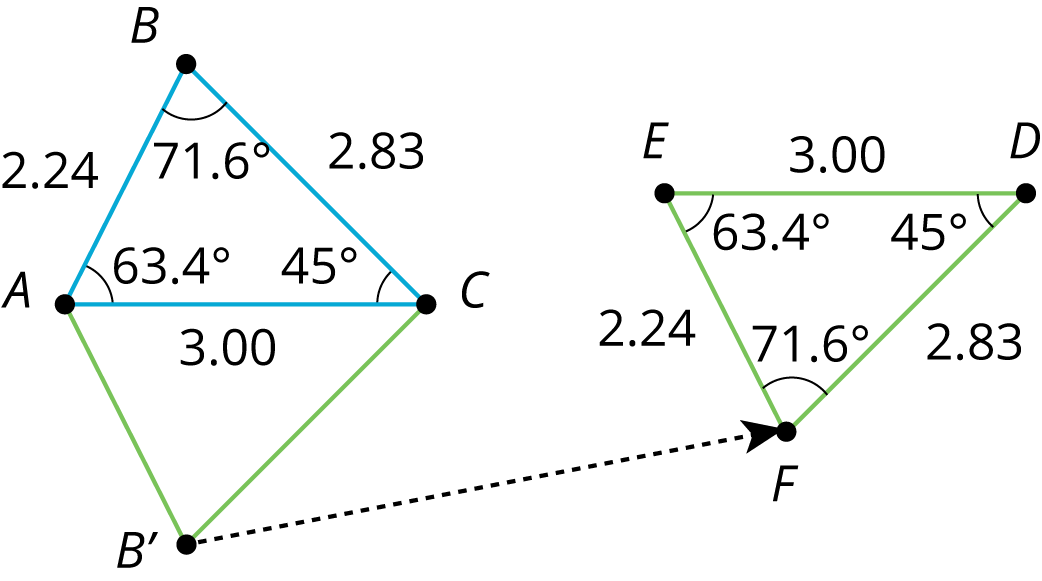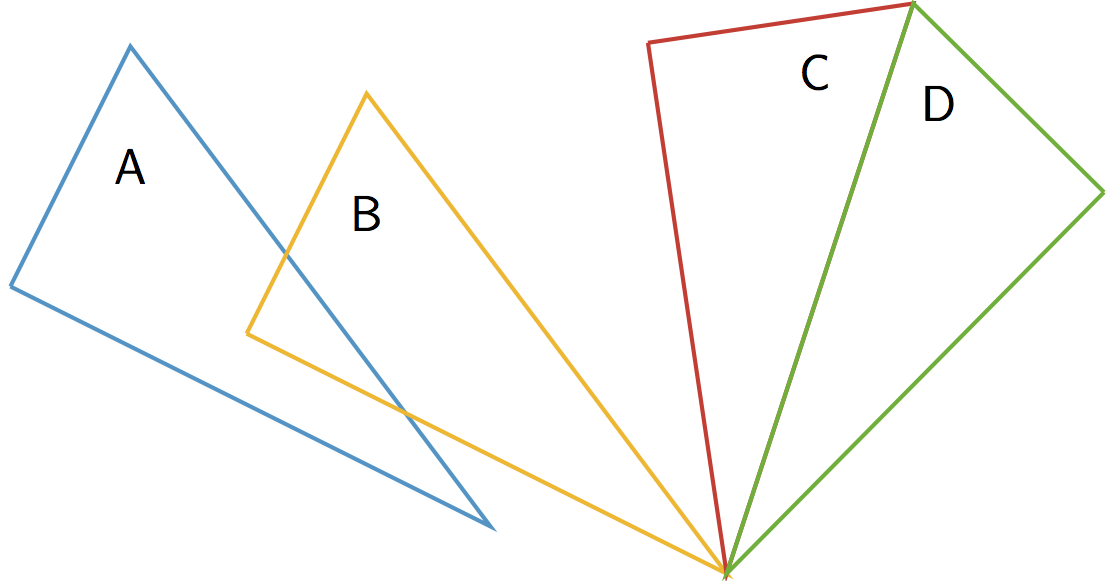The transformations we’ve learned about so far, translations, rotations, reflections, and sequences of these motions, are all examples of rigid transformations. A rigid transformation is a move that doesn’t change measurements on any figure.
Earlier, we learned that a figure and its image have corresponding points. With a rigid transformation, figures like polygons also have corresponding sides and corresponding angles. These corresponding parts have the same measurements.
For example, triangle EFD was made by reflecting triangle ABC across a horizontal line, then translating. Corresponding sides have the same lengths, and corresponding angles have the same measures.
| |
measurements in triangle ABC |
corresponding measurements in image EFD |
| row 1 |
AB = 2.24 |
EF = 2.24 |
| row 2 |
BC = 2.83 |
FD = 2.83 |
| row 3 |
CA = 3.00 |
DE = 3.00 |
| row 4 |
m\angle ABC = 71.6^\circ |
m\angle EFD= 71.6^\circ |
| row 5 |
m\angle BCA = 45.0^\circ |
m\angle FDE= 45.0^\circ |
| row 6 |
m\angle CAB = 63.4^\circ |
m\angle DEF= 63.4^\circ |





